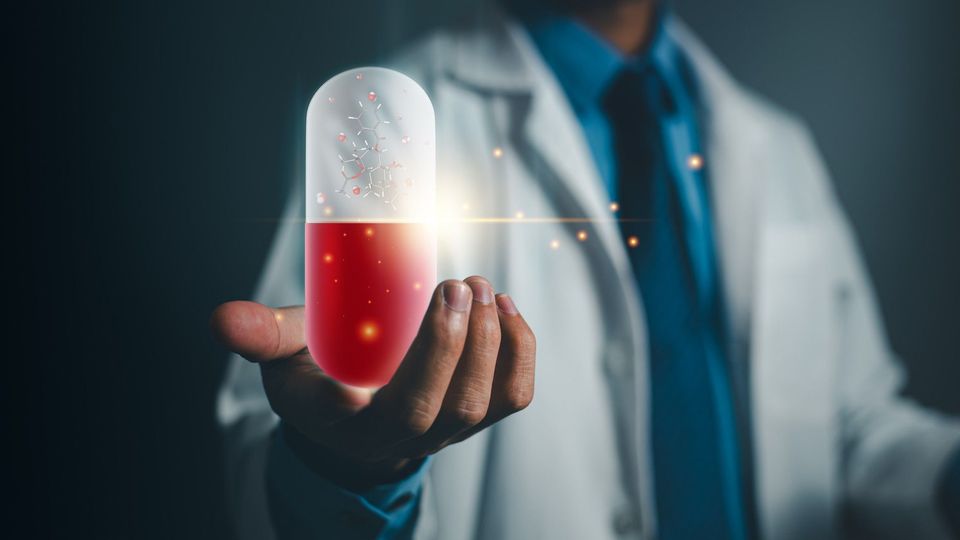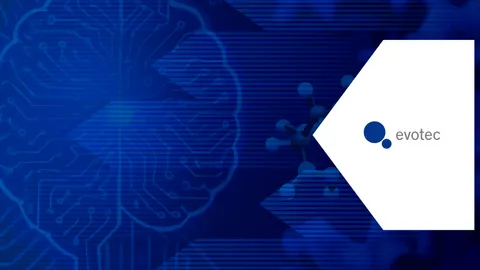Pharma Is Embracing the Lab of the Future – Here’s How
Investments in artificial intelligence and automation underscore pharma’s move towards the lab of the future.

The field of drug discovery is inherently complex and plagued by high costs, long development times and high rates of failure. Artificial intelligence (AI) and automation have emerged as transformative tools to help tackle these challenges.
The pharmaceutical industry is embracing these technologies and rapidly advancing towards the lab of the future, with companies such as Sanofi, Formation Bio and OpenAI collaborating on AI-powered software to help accelerate drug development.
“There has recently been, in almost every large pharma company, strategic investments towards the lab of the future, which is really an automated digital lab,” Dr. Hansjoerg Haas, senior director and general manager of laboratory automation at Thermo Fisher Scientific, previously told Technology Networks. “The goal is to create fully connected end-to-end workflows that provide real-time, remote data access, advanced analytics capabilities and facilitated decision-making.”
The lab of the future is a transformation of current laboratories, which often have disparate, unoptimized operations and data, into highly efficient, intelligent and effective spaces. “The concept of the lab of the future isn’t new – we’ve been talking about it for 15 years. In many ways, those labs are already here,” said Lars Kristiansen, vice president of product innovation and strategy at Molecular Devices. “What’s changed is the convergence of technologies that were once siloed. Today, we’re enabling researchers to explore complex biology in ways that weren’t feasible a decade ago, layering in automation, AI and machine learning to create intelligent, adaptive systems. These capabilities are now embedded in critical workflows – especially in areas like human-relevant models – where speed, precision and insight are essential. It’s not just about futuristic labs anymore; it’s about how we’re reimagining what’s possible in the lab today.”
What are the defining traits of the lab of the future? Haas believes there are multiple core elements. “On the technology side, it's connectivity. Connecting whatever instrument platforms you have digitally. Then acceleration with robotics and automation platforms. Finally, utilizing AI and machine learning to deal with large datasets that are coming out of the lab and using them to support decision-making.”
Embracing AI throughout the drug development pipeline
A key component of the lab of the future is AI. With AI seeing an explosion in popularity and power, excitement among drug developers has been building over its potential in the pharmaceutical space. AI has found applications from target identification to enhancing clinical trial design by optimizing treatment schedules, participant recruitment and data accessibility.
In June, the US Food and Drug Administration announced the launch of its own AI tool, Elsa, a large language model designed to assist with reading, writing and summarizing. The agency has stated that Elsa is already being utilized to accelerate clinical protocol reviews, shorten the time needed for scientific evaluations and identify high-priority inspection targets.
“AI is a tool that can be applied to most things, but in the context of drug discovery and development, I think it will play a part in the final step of the process, which is from having results to understanding what the next experiment/decision is. With large datasets coming from multiple experiments, AI can support analyzing this data and subsequent decision-making,” explained Haas.
Another area where AI has already had a significant impact is screening. “We used to do large, million compound screens. Now we're using more focused libraries with innovation coming from the data science and AI field, utilizing virtual screens, computer-aided drug design and structure-based drug design,” Dr. Lesley Granberg, chief science officer at Nashoba Valley Life Sciences, previously told Technology Networks.
“A lot of the principles that are coming from computer science are now coming together with the screening world and making that more efficient so that we're not having to do wet lab screens of millions of compounds. We can do a 10 million compound virtual screen, narrow this down to a thousand hits, then do the wet bench work. So, we're saving resources, time and money. Essentially, all the buzzwords that people love to hear in the C-suite,” Granberg continued.
Whilst AI has the potential to accelerate many aspects of drug development, it is still dependent on high-quality data to produce meaningful results.
The Pistoia Alliance’s 2024 Lab of the Future survey found that barriers to utilizing AI are shifting from behavioral issues towards more content-related challenges. For example, only 35% of respondents cited cultural barriers and institutional resistance to data sharing, down from 48% in 2023. Whereas low quality and poorly curated datasets were cited as the number one barrier to AI implementation (52%).
Many experts agree that AI is most successful when used with a human in the loop. “The great side is what it's [AI] is allowing us to do and the speed it's allowing us to do it. The drawback that I do see is that it's only as good as the models that you feed it. So, you still need that human component, whether you're in healthcare or drug discovery,” stated Granberg.
Haas echoes these sentiments, “I emphasize that AI could provide decision support in what I describe as a lab in a loop, which still has humans in the loop. There's also this idea of the self-driving lab, where workflows and decision-making are fully automatic. Nevertheless, there will be a tremendous increase in data and, hopefully, decisions that drive better drug candidates.”
Robotics, connectivity and the future of pharma
Beyond AI, laboratory automation has the potential to eliminate the most repetitive tasks in a lab, such as liquid handling. With the power of today's technology, it's now possible to automate ever more complex processes, including entire workflows.
"I believe that on the hardware side, it's primarily about robotics. The purpose of a robot is to eliminate or reduce unproductive work from people's schedules. Furthermore, if a robotic system can be loaded overnight by an Autonomous Mobile Robot to start in the morning and then be left to perform tasks automatically, it is significantly more productive than performing those tasks manually," said Haas.
Hardware tools, such as robots, have started to incorporate AI and machine learning towards efforts to create “robotic scientists” and self-driving laboratories.
“On the software side, it's all about better management of the lab. This includes software tools like experimental design,” said Haas. “For example, how do I take my manual method and transform it into a digital method to be executed on an automated liquid handler? In addition, utilizing digital twinning by having your assets in the lab in a digital format, enables scientists to plan their workflows in a digital simulation before they run them in the physical world.”
Together, these technologies have the potential to improve laboratory operations, accelerate drug development and ultimately benefit patients.
"We have conducted some assessments. Using robotic platforms, you can achieve an acceleration between 4 to 6 times, and sometimes even up to 10 times, compared to manual operations. When automated data analysis is included, the acceleration can increase to between 40 and 100 times. This has a profound impact on the speed of finding and optimizing drug candidates," said Haas.
“The lab of the future will be a combined human and machine effort requiring new expertise and data stewards. In the next five to seven years, I believe there's a lot that's only going to be accelerated, and the tools in the lab will likely change again,” Kristiansen concluded. “Robotics, integrations and working with multiple partners – especially across complex biological systems – are becoming more seamless. The ability to orchestrate automation, AI and collaborative platforms in critical workflows is easier today, and I'm confident it will be even more intuitive going forward.”
The above interviews were conducted at the Society for Laboratory Automation and Screening (SLAS) 2025 International Conference & Exhibition, which took place in San Diego, January 25–29.






